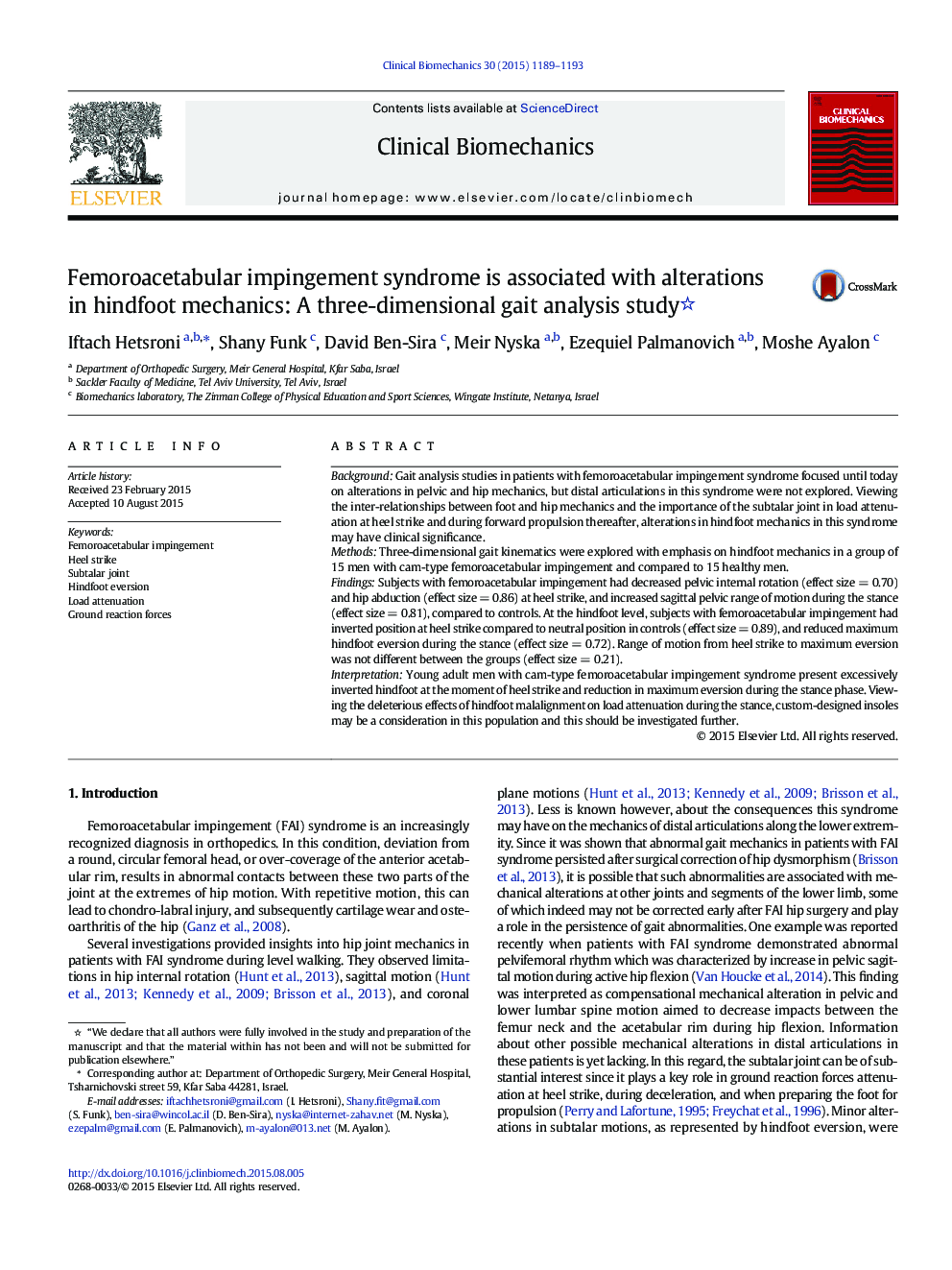| Article ID | Journal | Published Year | Pages | File Type |
|---|---|---|---|---|
| 4050091 | Clinical Biomechanics | 2015 | 5 Pages |
•Gait kinematics are explored in femoroacetabular impingement syndrome.•Hip and pelvic mechanics are affected primarily at heel strike.•In addition to altered hip and pelvic mechanics, hindfoot abnormalities are observed.•At heel strike, the hindfoot is excessively inverted.•During stance, maximum hindfoot eversion is reduced with range of motion unchanged.
BackgroundGait analysis studies in patients with femoroacetabular impingement syndrome focused until today on alterations in pelvic and hip mechanics, but distal articulations in this syndrome were not explored. Viewing the inter-relationships between foot and hip mechanics and the importance of the subtalar joint in load attenuation at heel strike and during forward propulsion thereafter, alterations in hindfoot mechanics in this syndrome may have clinical significance.MethodsThree-dimensional gait kinematics were explored with emphasis on hindfoot mechanics in a group of 15 men with cam-type femoroacetabular impingement and compared to 15 healthy men.FindingsSubjects with femoroacetabular impingement had decreased pelvic internal rotation (effect size = 0.70) and hip abduction (effect size = 0.86) at heel strike, and increased sagittal pelvic range of motion during the stance (effect size = 0.81), compared to controls. At the hindfoot level, subjects with femoroacetabular impingement had inverted position at heel strike compared to neutral position in controls (effect size = 0.89), and reduced maximum hindfoot eversion during the stance (effect size = 0.72). Range of motion from heel strike to maximum eversion was not different between the groups (effect size = 0.21).InterpretationYoung adult men with cam-type femoroacetabular impingement syndrome present excessively inverted hindfoot at the moment of heel strike and reduction in maximum eversion during the stance phase. Viewing the deleterious effects of hindfoot malalignment on load attenuation during the stance, custom-designed insoles may be a consideration in this population and this should be investigated further.
